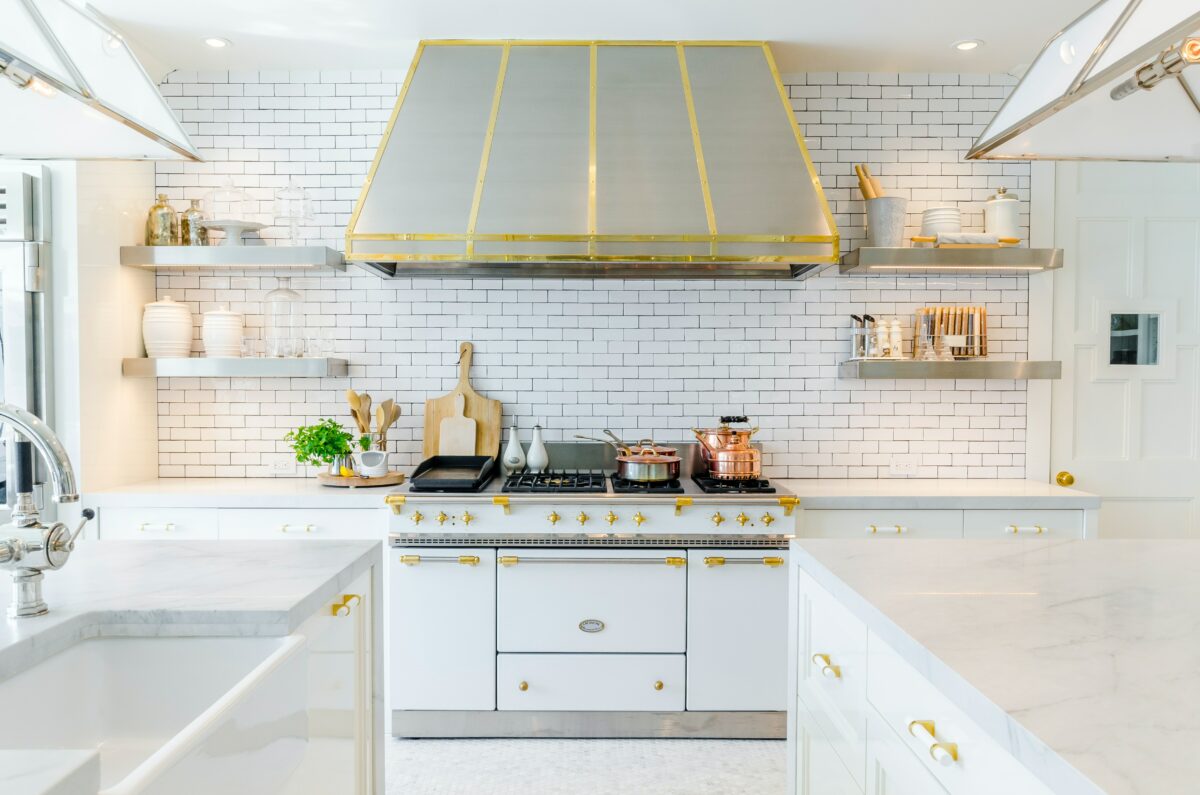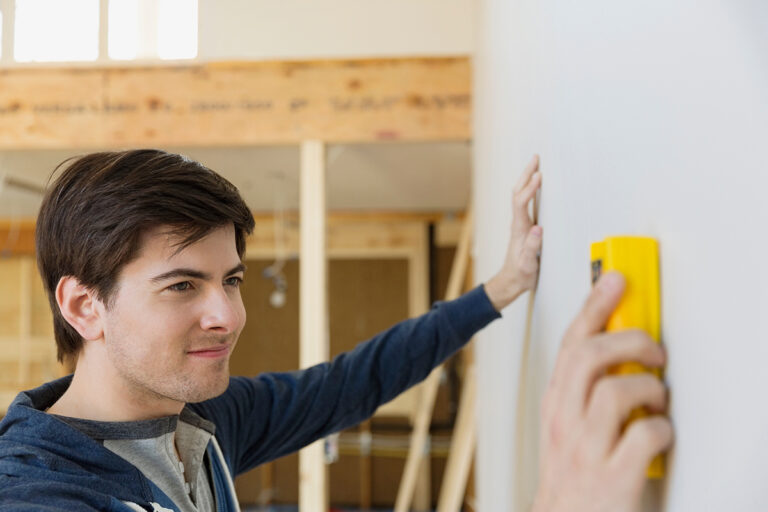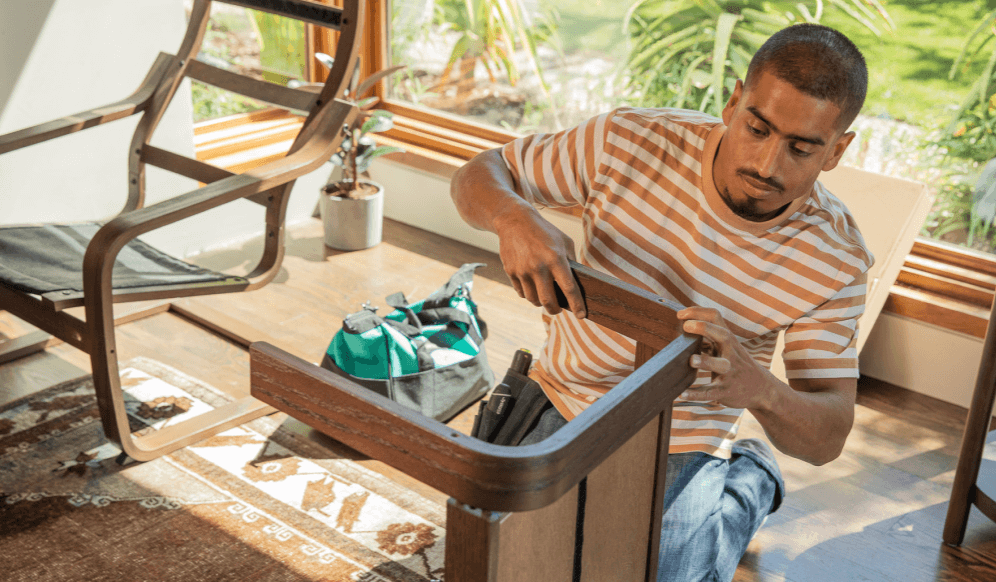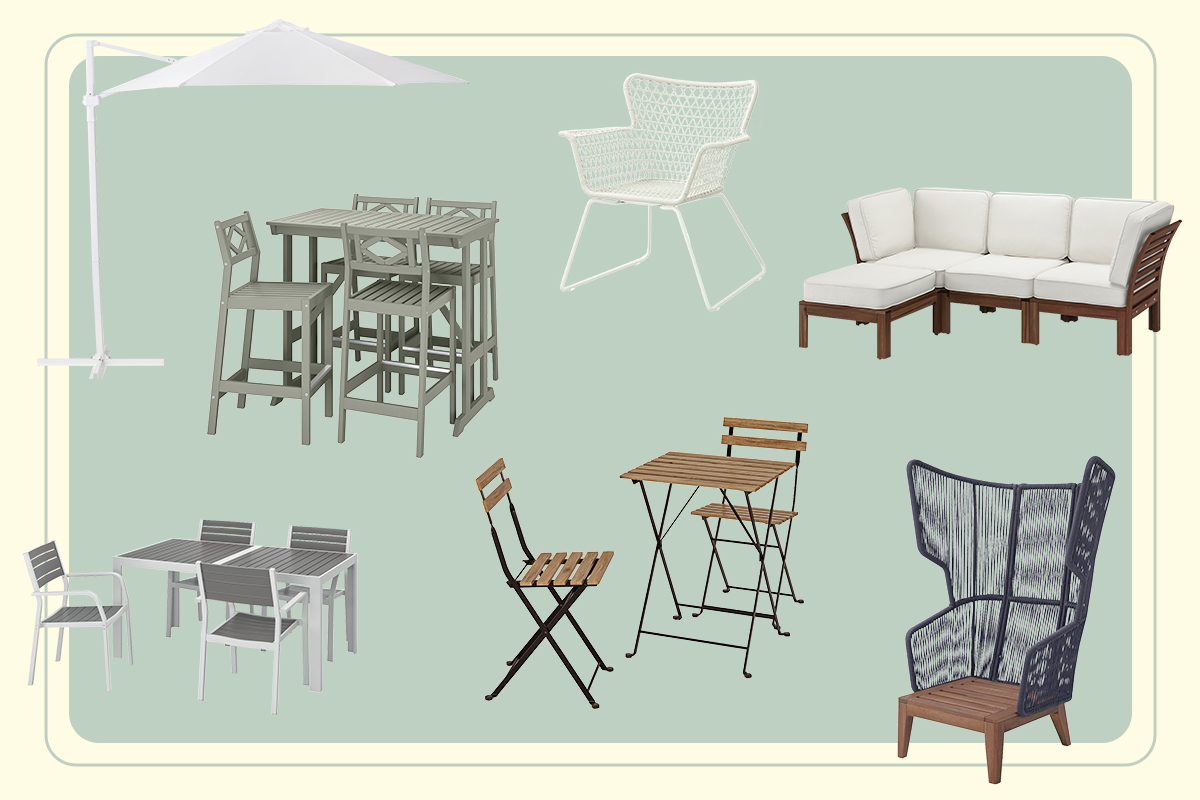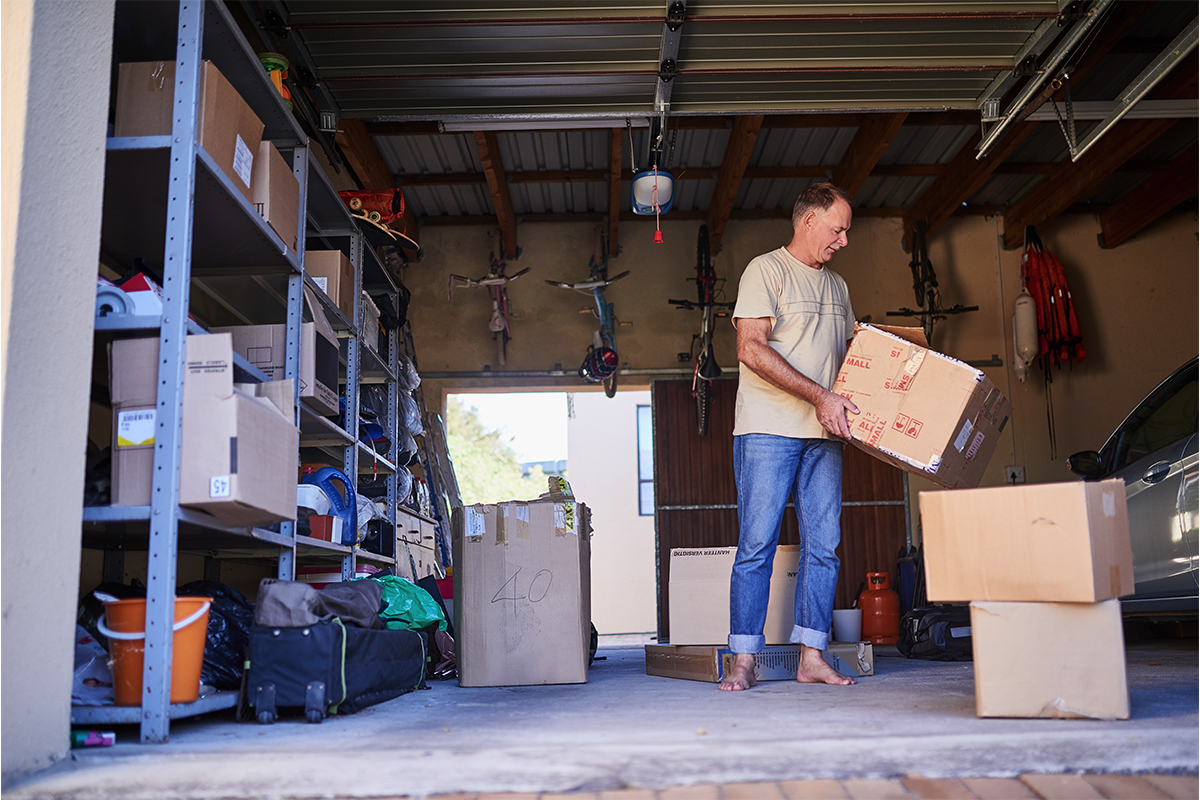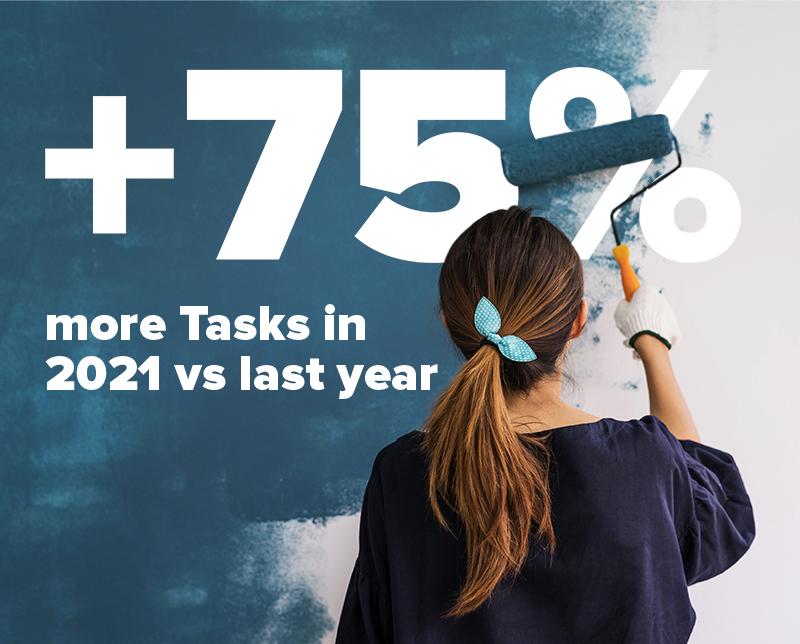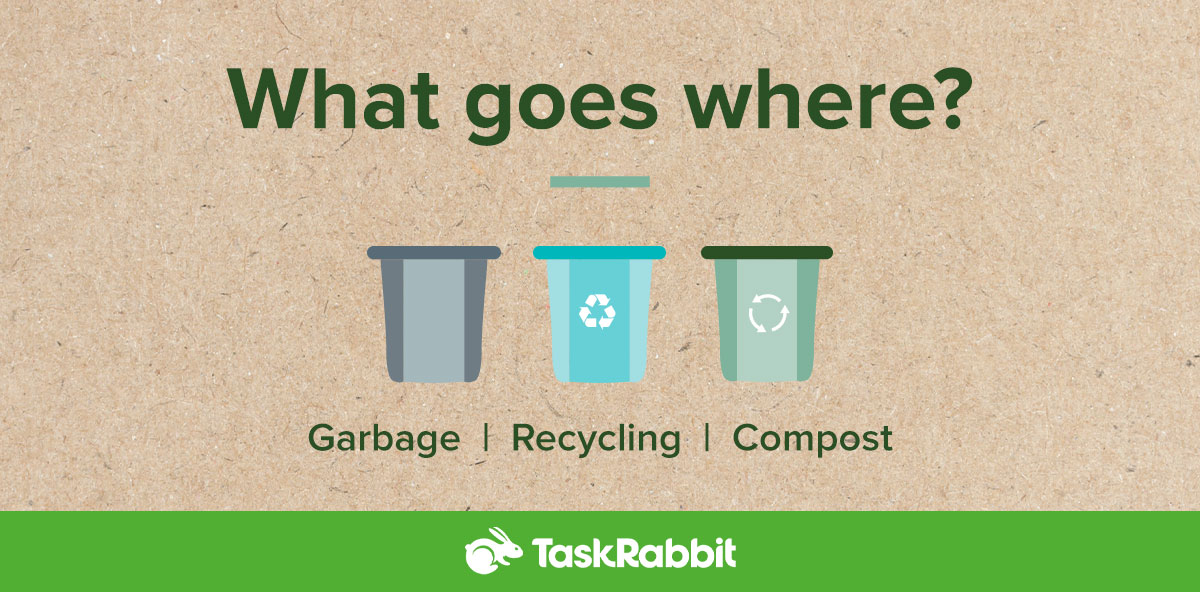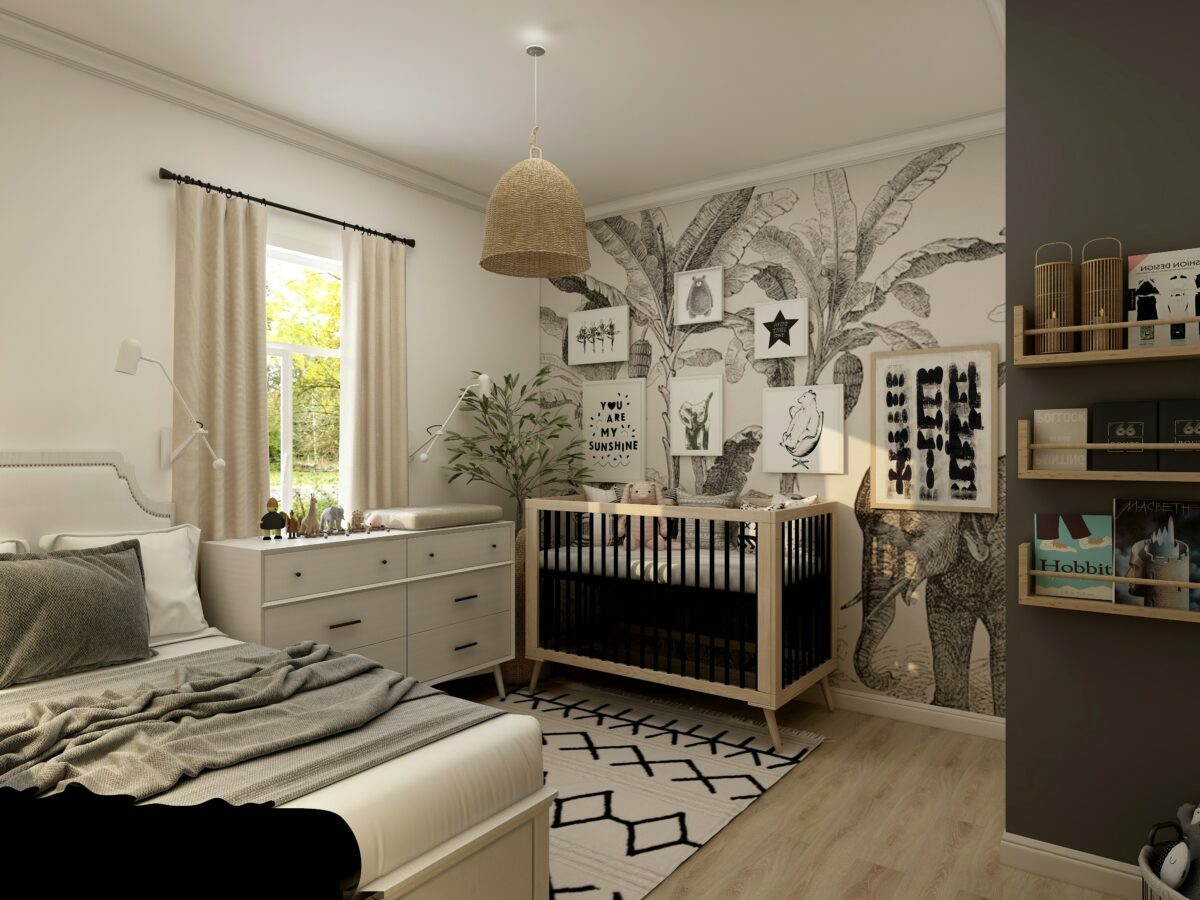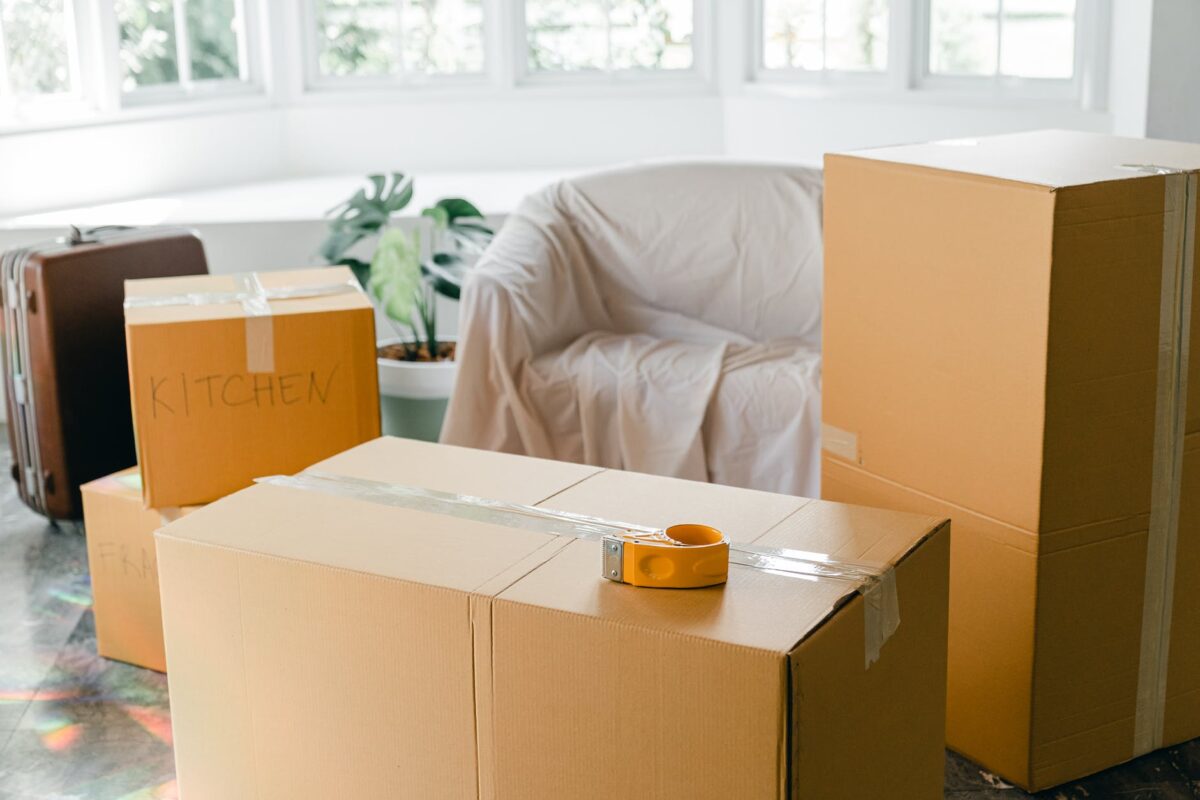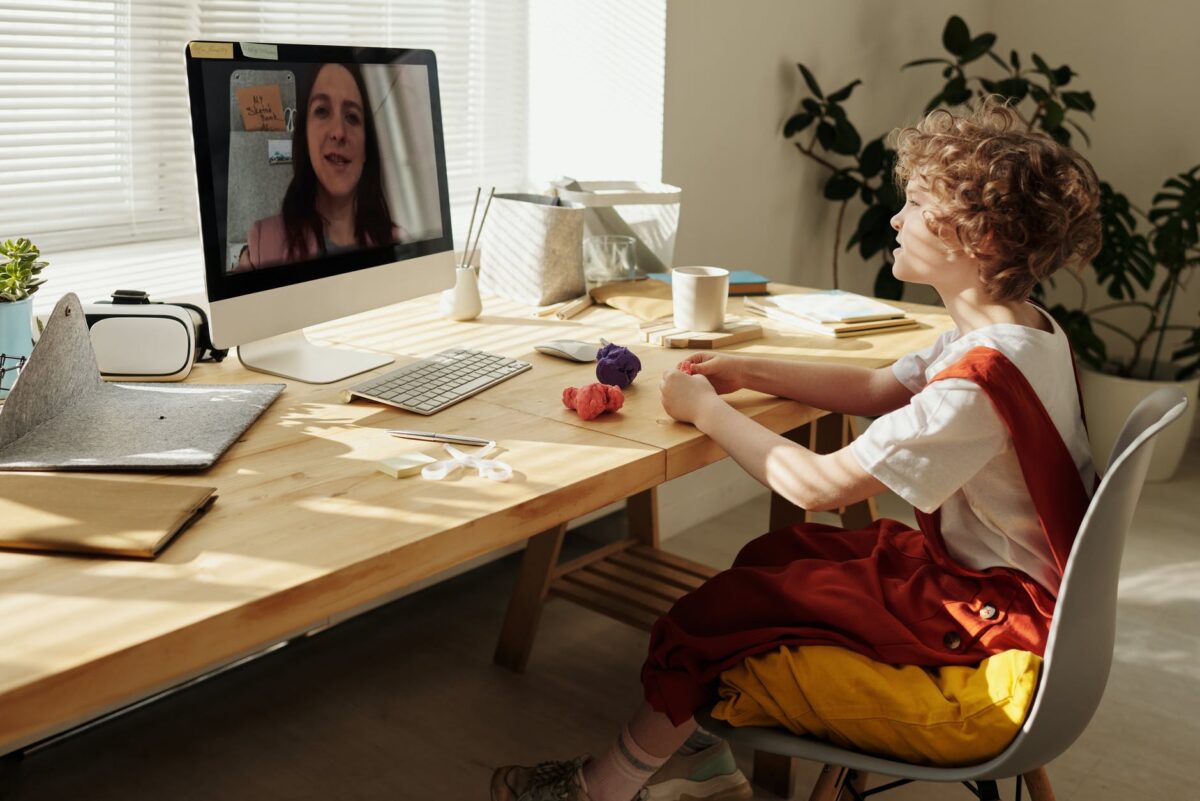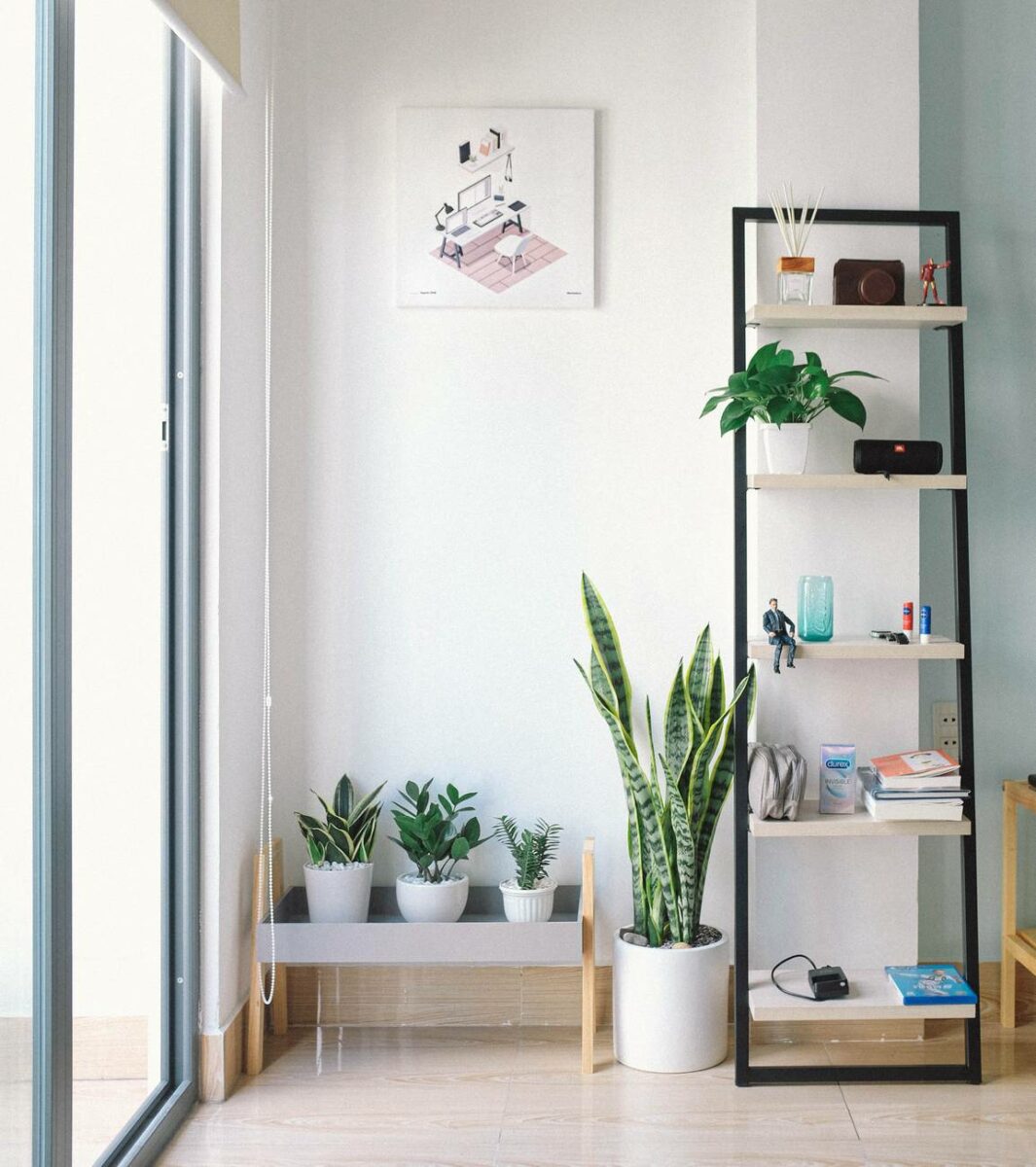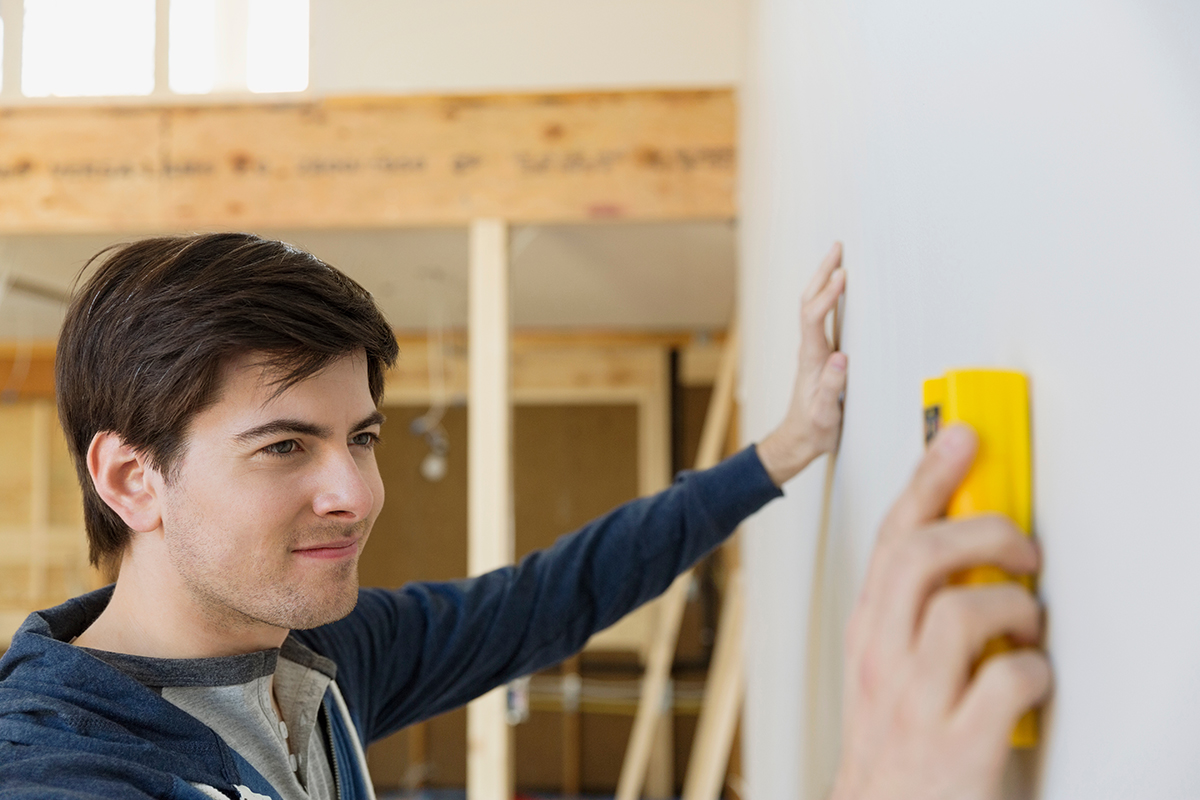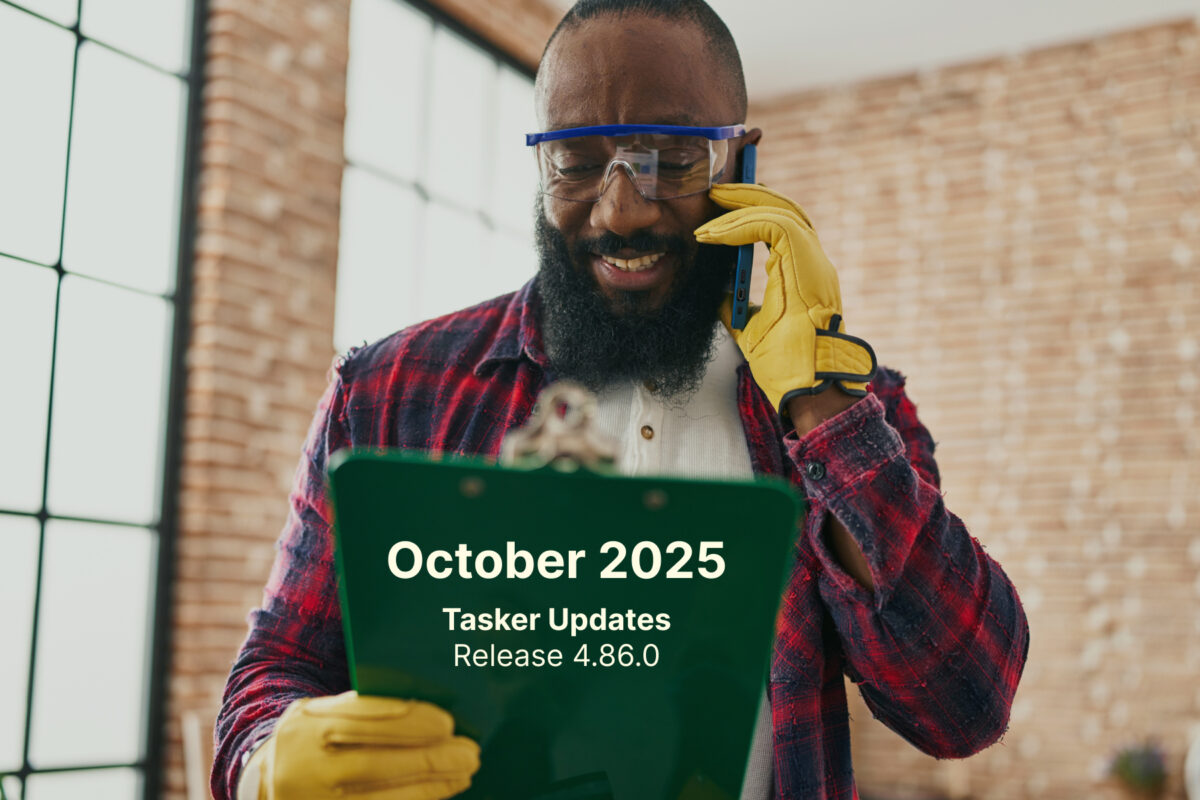A backsplash in the kitchen is a great way to add function, style, and personality to your space. Tiling a backsplash takes patience and determination, but you can certainly do it yourself if you choose! It’s best to keep a few things in mind before getting started to save time, money, and headache. This article will show you how to tile a kitchen backsplash.
How to Tile a Backsplash in a Kitchen
- Measure the Wall: Use your tape measure to determine the square footage of the area you’ll need to tile. You’ll multiply the height by the width of each section you need to cover, then add the square feet of all the different areas together to find the total square footage. Add ten percent to the total amount to ensure you purchase enough tile, mortar, and grout for your project.
- Clear the Area for Work: Remove everything, including appliances, from your countertops, then cover your counter with a drop cloth and tape off surfaces adjacent to your backslash to keep them clean during installation. You’ll also want to disconnect electrical power to the area and remove covers from your electric outlets.
- Clean and Prep the Wall: The wall should be free of dirt, grease, and any old tile. To remove old tile, scrape between the tiles to break them free from the grout, then use a masonry hammer to tap the tile out of the wall. Make sure to wear protective glasses! To prepare a bare wall, patch up any holes with spackling paste and then wash the wall with soap and water or tri-sodium phosphate, so it’s thoroughly clean. Glossy surfaces, including painted walls, should be sanded. Optionally, you can consider installing backer board to the walls for the most durable tiling results.
- Plan and Pre-Lay Tiles: Planning kitchen tile is so important! Pre-lay your tiles, starting with the tile that will be most visible in the area, and work outward and upward from there. Mark your starting and end points with a pencil, as well as individual tile positions as you go.
- Cut Tiles To Fit On The Backsplash: If cutting your tiles is needed for your area, now’s the time to do it. For porcelain or ceramic tile, use a tile cutter and a tile nipper for any circular incision. If you’re cutting natural stone, use a wet tile saw.
- Apply Adhesive and Place Tiles: Mix your chosen tile adhesive—we recommend thinset mortar—according to the package’s directions. Then apply it in two-foot sections using a notched trowel by spreading a thin layer of mortar with the flat side of the trowel. Then add mortar to the notched edge and comb even mortar ridges onto the wall. You’ll want to add mortar and tiles in the order you marked in the pre-lay phase. Place the tiles on your adhesive by rocking them up and down perpendicular to your trowel lines. Flatten the tile with a rubber grout float and use tile spacers to keep your tile pieces lined up. After attaching the tile to the wall, let the adhesive dry completely before proceeding to the next step. Usually, this takes at least 24 hours.
- Adding Grout: Mix the grout according to the directions, then apply it diagonally across the tiles with a rubber float. After ten minutes, wipe away excess grout with a rinsed sponge in a diagonal direction. If a haze forms, don’t worry. You can remove that later with a haze remover.
- Sealing The Backsplash: Let your grout completely dry according to the manufacturer’s instructions. Drying can take anywhere from 24-72 hours. Apply grout sealer across your new backsplash to prevent staining and let dry. Make sure to also fill the expansion gaps with caulk.
- Replace Outlets and Switch Covers: To bring the switches and outlets level with your new backsplash, add box extenders to them. Replace the covers of your outlets and switches.
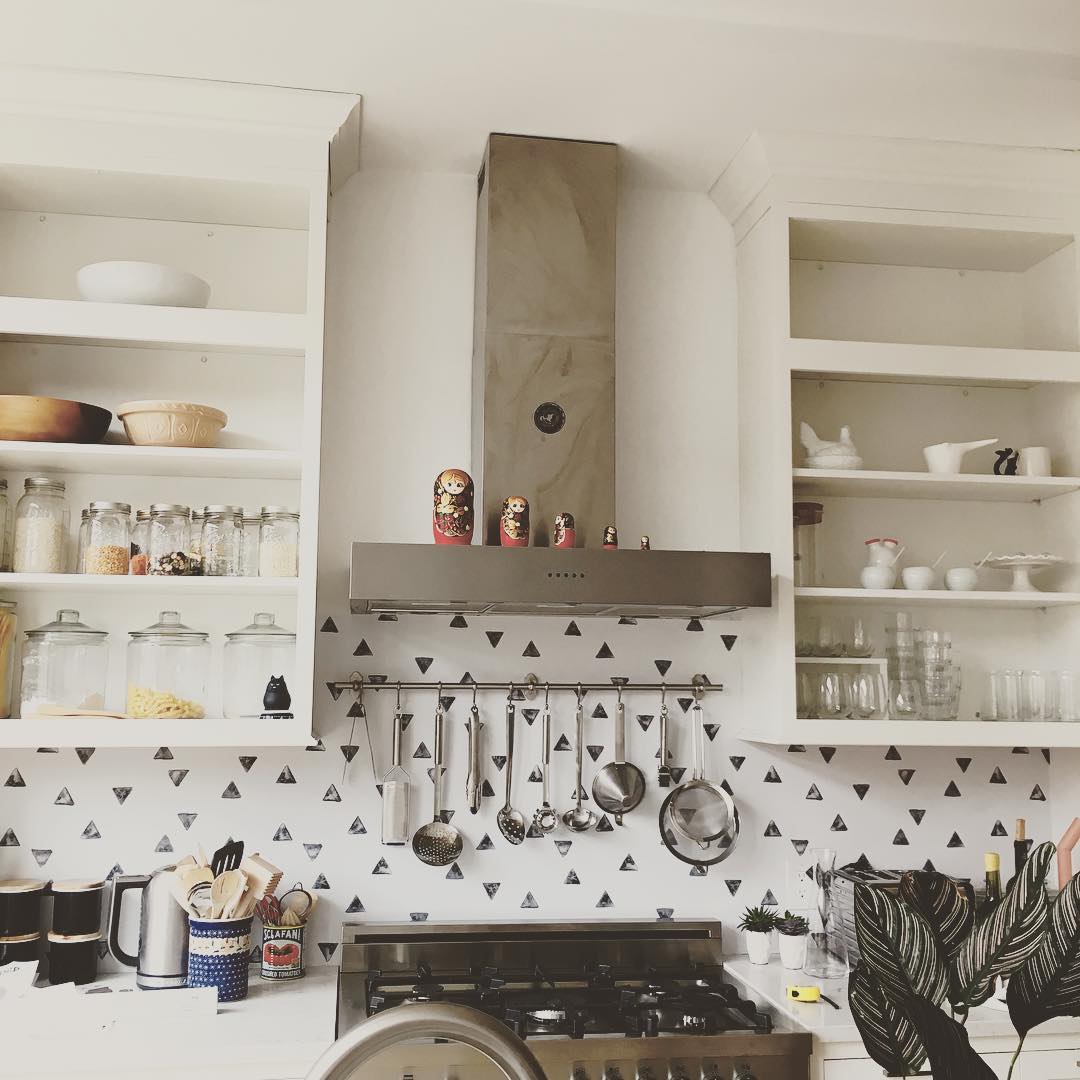
How Long It Takes To Install A Backsplash
Installing a kitchen backsplash is a straightforward task, but it can take some time to complete. Depending on the size of your kitchen and the type of tile you choose, the installation process can take anywhere from a day to a week. A professional installer usually takes two to three days to install a medium-sized backsplash area; if you are doing it yourself, it will likely take longer as you overcome the learning curve!
Cost of Tiling a Kitchen Backsplash
The cost of installing a kitchen backsplash will vary depending on the size of your kitchen, the type of tile you choose, and the amount of labor involved. You’ll save money by accurately measuring your kitchen and buying the appropriate amount of tile.
| Material Type | Price per Square Foot |
| Aluminum | $30 |
| Beadboard | $13 |
| Brick | $15 |
| Ceramic | $20 |
| Glass | $25 |
| Granite | $60 |
| Marble | $40 |
| Porcelain | $10 |
| Quartz | $65 |
| Stainless Steel | $35 |
| Tin | $20 |
| Travertine | $18 |
Estimated Labor Cost
- Low-End Estimate: $300
- Mid-Range Estimate: $400
- High-End Estimate: $550
For example, if your backsplash area is 30 square feet and you chose ceramic tiles, your material cost would be $600. If you added expert installation for $400, your estimated total would be $1000.
It may be counterintuitive, but hiring an expert to install your kitchen backsplash can be a great way to save time and money, so you don’t have to buy all the tools and materials yourself. Plus, they’ll have the experience to install your kitchen backsplash quickly and efficiently.
Tools & Materials Needed
Unless you have these tools and materials already, you’ll need to invest in them before getting started on this task.
| Tools | Materials |
| Tape Measure | Tile |
| Circuit Tester/Voltage Detector | Grout |
| Level | Tile Caulk |
| Tile Cutter/Tile Nippers | Thinset Mortar |
| Tile Saw | Backer Board (optional) |
| Notched Trowel
Sponge | TSP (Trisodium Phosphate)
Tile Spacers |
| Eye Protection | Painters Tape |
| Cleaning Gloves | Grout Sealer |
| Drop Cloth | Electrical Box Extenders |
| Masonry Hammer (if removing old tile) |
To save your resources, consider enlisting help from an expert who already has the tools and materials needed if you think you won’t be using some of these tools again.
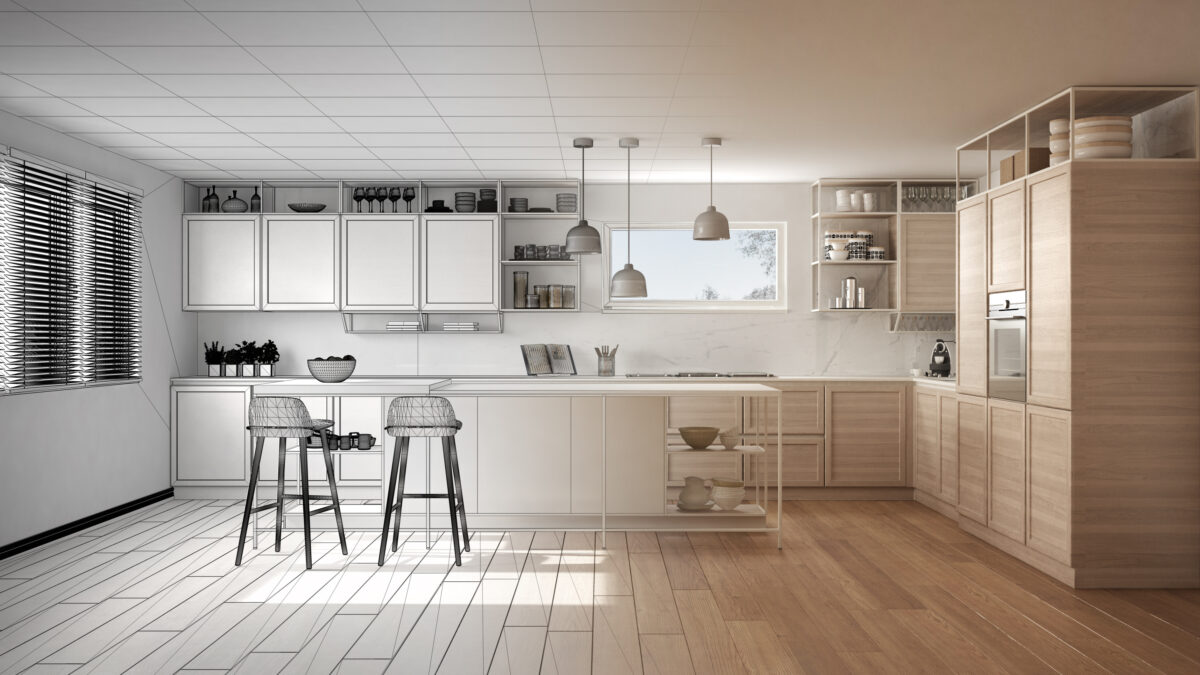
Potential Issues When Installing Kitchen Backsplash
There’s so much to love about a backsplash—it’s easy to clean, and it also upgrades your kitchen’s aesthetic. But there are a few potential issues that you should be aware of. These issues include:
Not Having a Plan
Don’t just rely on instinct when choosing a backsplash—you need to consider all the pieces together before purchasing or getting started. That means making sure your tile is suitable for your space, the grout is the right color, and your tools are also the appropriate type for the type of tile you choose. Failing to plan for all factors can be costly since removing and reinstalling the backsplash is expensive and labor-intensive.
Tiled Backsplash Color
There are a few things to consider when choosing a tile color to ensure it will work in the long run. One mistake many people make is trying to match the backsplash with the countertops; however, this choice often leaves something to be desired. A contrasting color will add a more dynamic, inviting look to your kitchen. You also want to consider what will stay in style—opting for more classic styles that can last the distance as trends change is a good thing to consider before picking out a busy pattern. And lastly, painting walls is easier than changing out your backsplash, making neutrals a good choice for your tile!
Installation
This is a big one! Don’t be deceived; just because a backsplash is a small area doesn’t mean it will be an “easy” job. In fact, the smaller the space, sometimes the more complex the job. And it’s even worse if you choose a long style of tile or a slab (these are extra difficult to install!) Not everyone is up to tile installation, but you might discover this too late after realizing many contractors won’t come out for small jobs. Thankfully, Taskers will, though, if you find yourself in a bind.
Grout and Sealing
Don’t skimp on grout and sealing! If there are gaps between the wall and tiles, or between the tiles, water can seep through and lead to damage. Proper grout application and thorough sealing will prevent this—or you can opt for backsplash panels made of materials that don’t require grout. Some examples are glass, metal, laminate, and even high-gloss acrylic. Oh, and no grout means no cleaning the grout later, too!
Doing It Yourself
There are many home projects where the cost of making a mistake is low. Installing a backsplash isn’t one of them. When someone doesn’t know how to install kitchen backsplash properly, it can lead to water damage in your kitchen, and not to mention, look less than appealing. It’s also a time-consuming task for a novice. It can take a week or more, depending on the installer’s expertise level and materials’ drying time. And if you happen to install it incorrectly, it will cost you more money down the road.
If you’re not confident that you fully know how to do a backsplash in your kitchen, it’s one task that may be best to outsource. The right Minor Home Repair Tasker will have the tools and experience you don’t to install your kitchen backsplash without hiccups or wasting your precious time or resources. Book a Tasker today!
Last updated on May 8, 2023 by Brent S.

